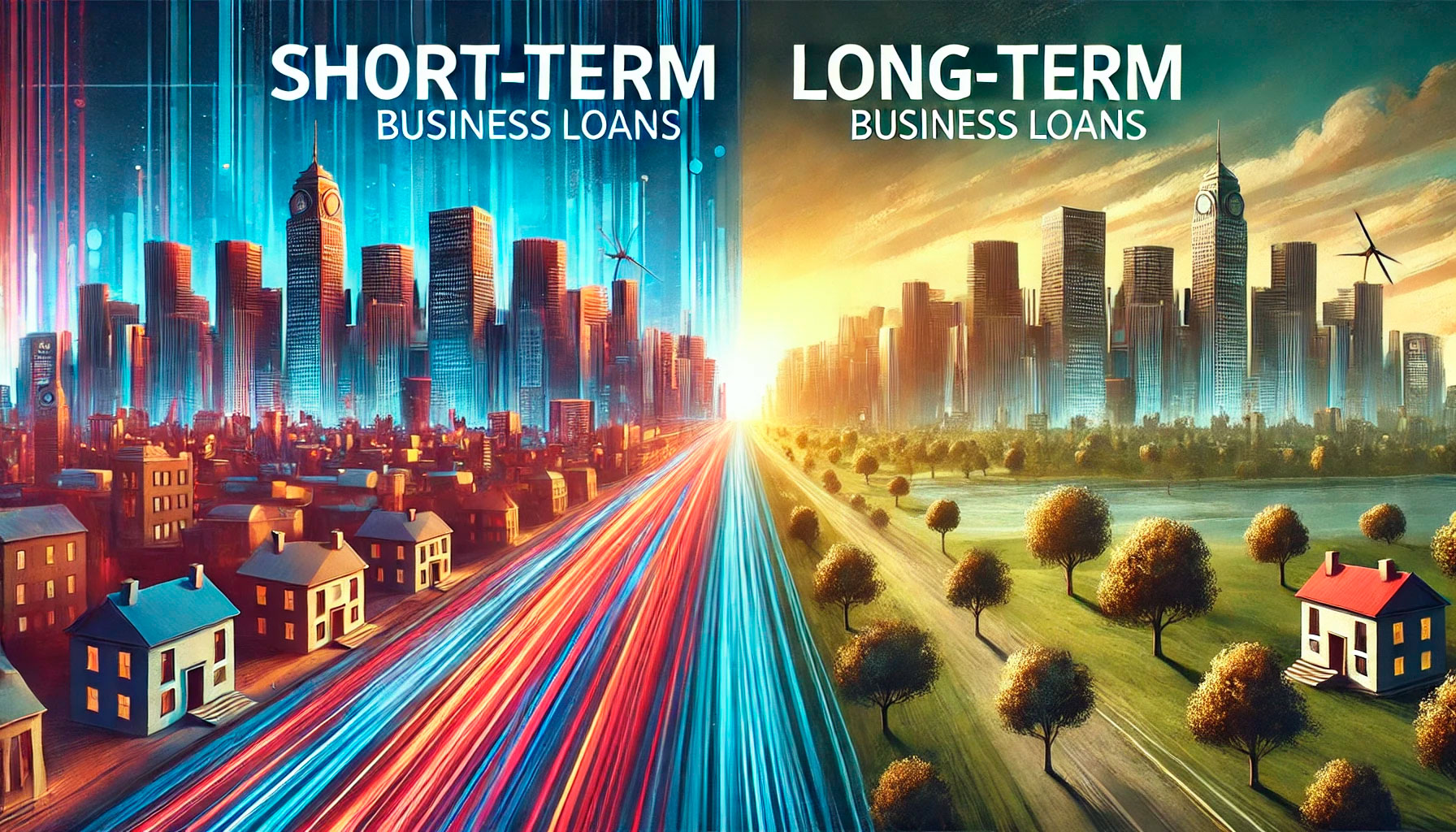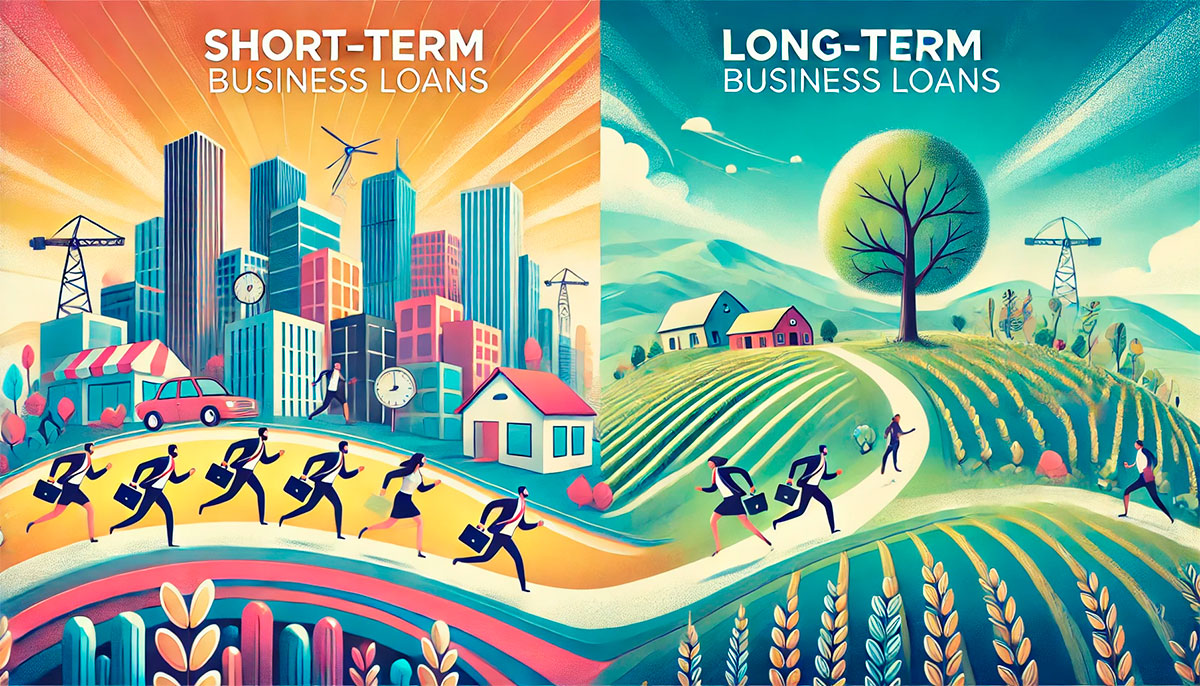
Expanding Your Business with Short-Term vs. Long-Term Loans
When it comes to expanding your business, securing the right financing is often a crucial step in ensuring growth without sacrificing financial stability. One of the key decisions you’ll need to make is whether to opt for a short-term or long-term loan. Both options have their benefits and drawbacks, and the choice depends largely on your business’s specific needs, goals, and financial health. Understanding the differences between short-term and long-term loans, as well as how they impact your business, will help you make a more informed decision.
Understanding Short-Term Loans
Short-term loans are designed to provide businesses with quick access to capital, typically to address immediate financial needs or short-term goals. These loans are usually repaid within a year, although some may extend up to 18 months. Because of their shorter repayment period, short-term loans are often used to cover operational costs, address cash flow shortages, or take advantage of immediate opportunities, such as bulk inventory purchases or seasonal needs.
One of the main advantages of short-term loans is that they provide fast access to funds. This makes them particularly useful for businesses that need immediate liquidity or are dealing with temporary financial challenges. The application process for short-term loans is often simpler and quicker compared to long-term loans, allowing businesses to get the funding they need without long delays.
However, because of their short repayment periods, these loans typically come with higher interest rates and larger monthly payments. This can put pressure on cash flow, especially for businesses that may already be facing financial challenges. Additionally, short-term loans may not provide sufficient capital for larger expansion projects or long-term investments, making them better suited for businesses with immediate, short-term financial needs.
Understanding Long-Term Loans
Long-term loans, in contrast, are used for financing significant investments or expansion plans that require more substantial amounts of capital. These loans are repaid over a longer period, often ranging from three to 25 years, making them ideal for businesses planning to make major purchases such as real estate, equipment, or infrastructure improvements.
One of the biggest benefits of long-term loans is that they come with lower monthly payments, as the repayment period is spread over several years. This makes them easier to manage in terms of cash flow, allowing businesses to focus on growth without being burdened by high monthly debt obligations. Additionally, long-term loans often have lower interest rates compared to short-term loans, which can reduce the overall cost of borrowing.
However, the application process for long-term loans can be more complex and time-consuming. Lenders typically require more documentation, such as detailed business plans, financial statements, and collateral, before approving a long-term loan. Additionally, long-term loans may not be the best option for businesses that need quick access to capital or those looking to cover short-term expenses.
When to Choose a Short-Term Loan
Short-term loans are an excellent choice for businesses that need immediate access to cash for short-term needs. If your business is facing a temporary cash flow shortage due to seasonal fluctuations or unexpected expenses, a short-term loan can provide the necessary liquidity to keep operations running smoothly. These loans are also useful for businesses that want to take advantage of short-term opportunities, such as purchasing discounted inventory or launching a marketing campaign to boost sales.
Additionally, short-term loans can be beneficial for newer businesses that may not yet have the financial history or creditworthiness to qualify for larger, long-term loans. Because the approval process for short-term loans is often faster and less stringent, they can serve as a stepping stone for businesses looking to establish credit and prove their ability to repay debt.
However, it’s important to consider the higher monthly payments and interest rates associated with short-term loans. Businesses that are already struggling with cash flow or have limited revenue should carefully assess whether they can handle the repayment obligations before committing to this type of loan.

When to Choose a Long-Term Loan
Long-term loans are ideal for businesses that are planning to make significant investments in their growth, such as purchasing real estate, upgrading equipment, or expanding into new markets. Because these loans provide larger amounts of capital and are repaid over several years, they offer the flexibility and stability needed for businesses that require substantial financing for long-term projects.
If your business has a solid financial foundation, strong credit history, and the ability to provide collateral, a long-term loan can be an excellent option. The lower interest rates and smaller monthly payments can help your business maintain healthy cash flow while investing in its future. Additionally, the extended repayment period allows you to spread out the cost of your investment over time, making it easier to manage financially.
Long-term loans also provide the opportunity for businesses to grow at a steady pace without the pressure of repaying a large debt in a short period. However, because the approval process can be more complex, businesses should be prepared to provide detailed financial documentation and a clear plan for how the loan will be used to generate returns.
Factors to Consider When Choosing Between Short-Term and Long-Term Loans
When deciding between a short-term and long-term loan, it’s important to consider several factors that will impact both your business’s immediate needs and its long-term financial health.
First, assess your cash flow and revenue projections. If your business has consistent cash flow and can comfortably handle higher monthly payments, a short-term loan may be the right choice. However, if your cash flow is less predictable or if you’re planning a major investment that will take time to generate returns, a long-term loan might provide the stability and flexibility you need.
Second, consider the total cost of borrowing. While short-term loans have higher interest rates, the overall cost of borrowing may be lower if the loan is repaid quickly. On the other hand, long-term loans spread out the cost over a longer period, which can result in higher interest payments over time. Make sure to calculate the total interest paid for each loan option and compare it with your business’s projected returns.
Finally, think about the urgency of your financing needs. If you need capital quickly to address an immediate need or opportunity, a short-term loan may be the best option due to its faster approval process. However, if you’re planning a larger, more strategic investment, the longer application process and larger loan amounts associated with long-term loans may be worth the wait.
Conclusion
Both short-term and long-term loans offer valuable financing options for businesses looking to expand, but the right choice depends on your business’s specific needs, financial health, and long-term goals. Short-term loans provide quick access to capital for immediate needs but come with higher monthly payments and interest rates. Long-term loans, on the other hand, offer larger amounts of capital with lower monthly payments, making them ideal for major investments and steady growth.
Carefully evaluating your cash flow, the cost of borrowing, and your business’s growth strategy will help you make the best decision when choosing between short-term and long-term financing. With the right loan in place, your business can confidently expand, invest in new opportunities, and achieve long-term success.
You May Also Like

How to Secure a Business Loan with Bad Credit
September 11, 2024
Building Business Credit: A Step-by-Step Guide for Entrepreneurs
August 7, 2024
